The Yorath Lewis Archive holds the secrets to a railway that had the potential to change the world. Our most recent cataloguing project has sought to uncover the mysteries of the early-20th-century railway that never stopped.
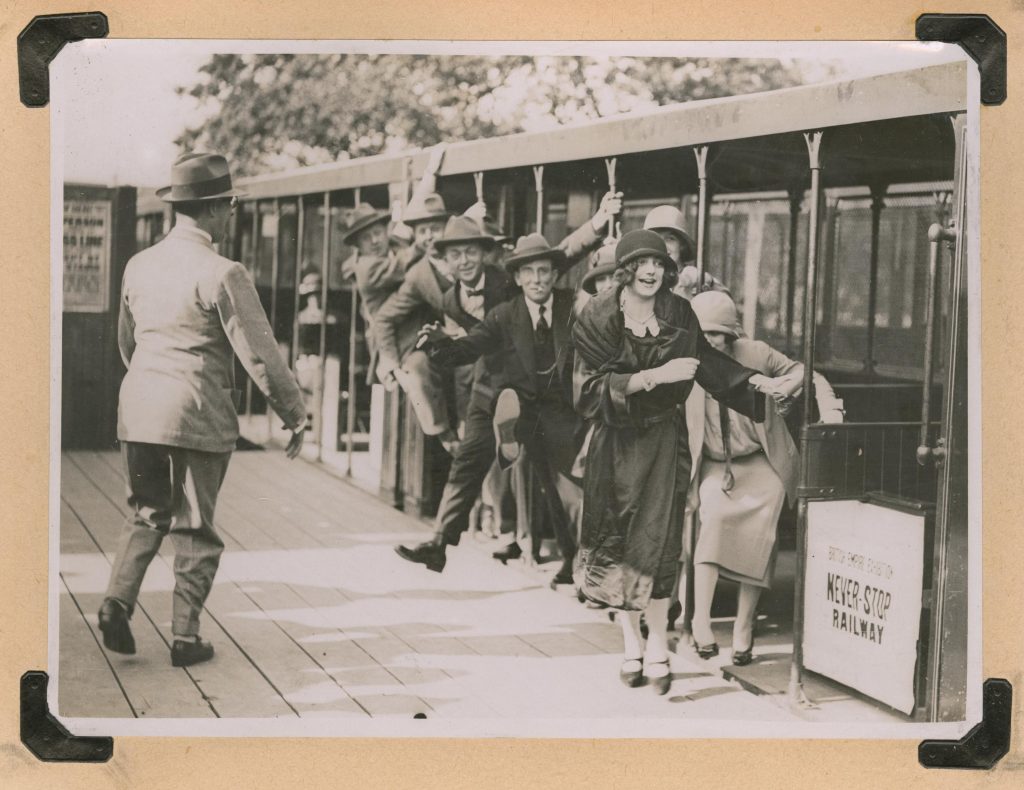
Inspired by the “Trottoir Roulant” (moving pavement) in Paris in 1900, William Yorath Lewis set out to design a system of continuous transport with the intention of replacing the current underground system in London. Teaming up with Benjamin Ratcliffe Adkins in the 1900s, the two patented the Adkins-Lewis System of Continuous Transport. Initial trials were carried out at Ipswich to demonstrate the transportation system before being relocated to Aldwych for public demonstrations.
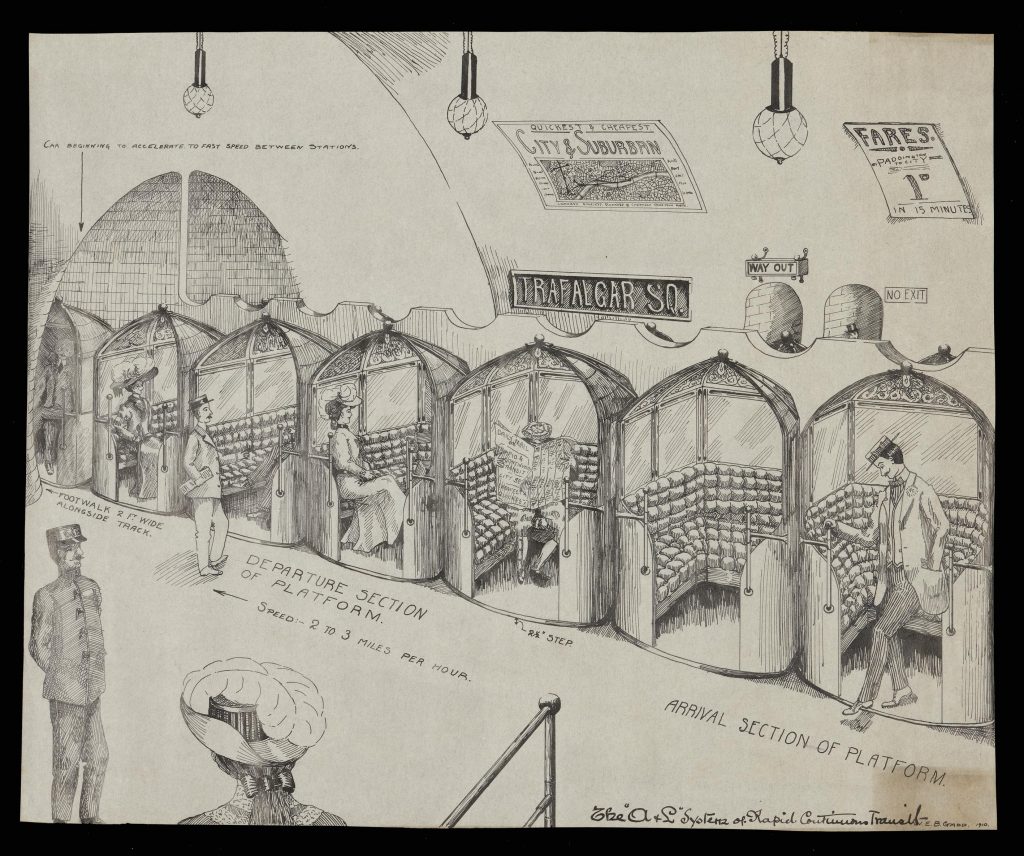
This unusual transport system sits on two rails and is driven by a giant screw underneath the carriages. As the carriages come into the station the coil of the screw gets tighter, slowing them down. Meanwhile between the stations the coils are more loosely spaced, increasing the speed at which the carriages travel. As the name suggests the carriages never come to a complete stop and passengers are expected to hop off while it is still in motion. The lack of stopping meant that the railway was able to get a greater average speed than the trains being run on the London Underground at the time.
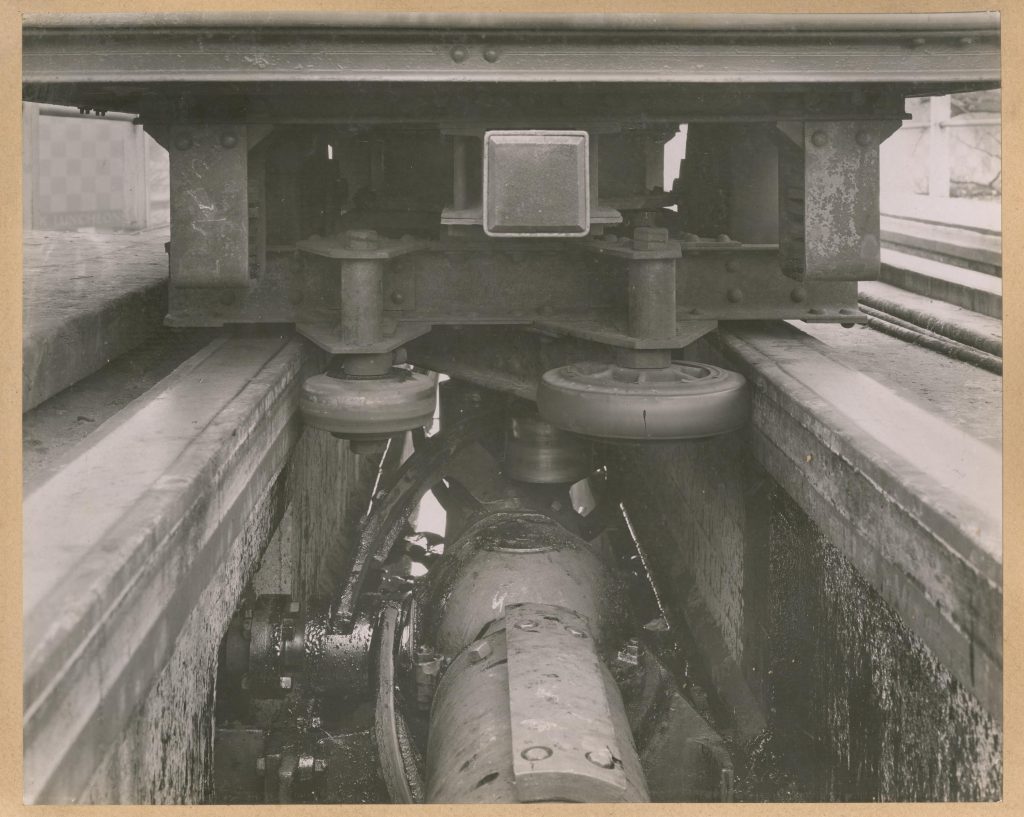
Lewis was extremely passionate about his system and actively promoted it at talks around London. He also entered a competition in Paris in 1922 that invited contestants to design an alternative method of transport to those currently used in the city. This led to the formation of the Never-Stop Transit Ltd (NST). Shortly after entering this competition the NST entered an agreement with the British Empire Exhibition Committee to build a system for the British Empire Exhibition. In order to do this, they first had to prove themselves by building a prototype, which they successfully completed at Southend-on-Sea. The Never-Stop Railway was finally built for the 1924 British Empire Exhibition and transported visitors around the Wembley site during the exhibition in 1924 and 1925. When the British Empire Exhibition finally closed its doors in 1925 due to lack of public interest the Never-Stop Transit Ltd was disbanded and Lewis’ partnership with Atkins was abandoned.
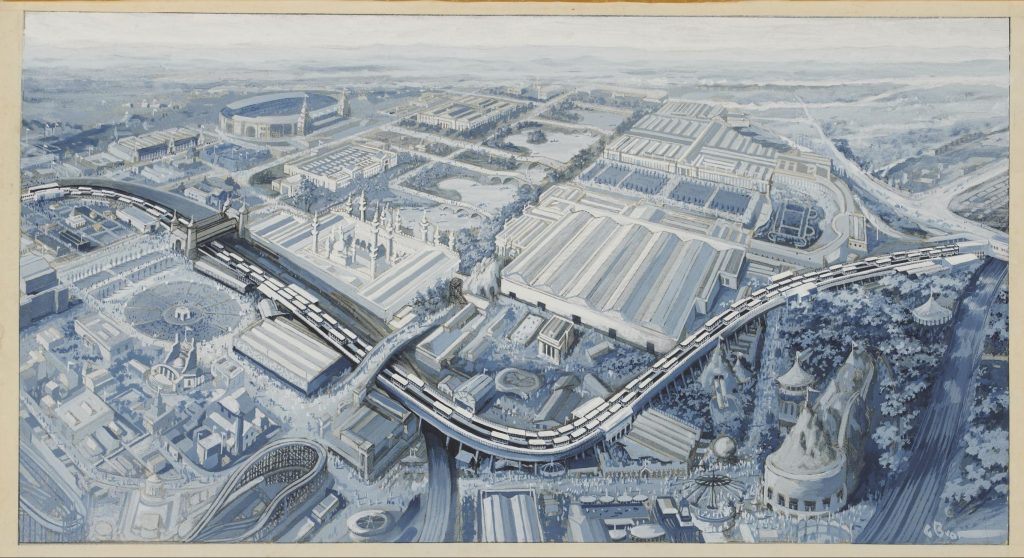
Part of the project saw the digitisation of a film from the collection. The film was recorded at Southend-on-Sea and shows various shots of the Never-Stop Railway in motion as well as close-ups of the screw mechanism.
However, this was not the end of the NSR. In 1951 Lewis resumed contact with Adkins and together they began scheming. This led to the modernisation of the NSR with new ideas for new ventures. The result was the formation of Lewis-Adkins Ltd. Remarketed as a system of rapid continuous and semi continuous transportation of passengers, goods and raw materials, new ideas included passenger transportation, coal mine transportation and adaptation to lifts for the use in mines and underground railways. Lewis continued to give talks and even appeared on television on the “Tonight” show in 1959. Unfortunately none of these plans ever came to fruition and eventually Lewis and his railway were forgotten about.
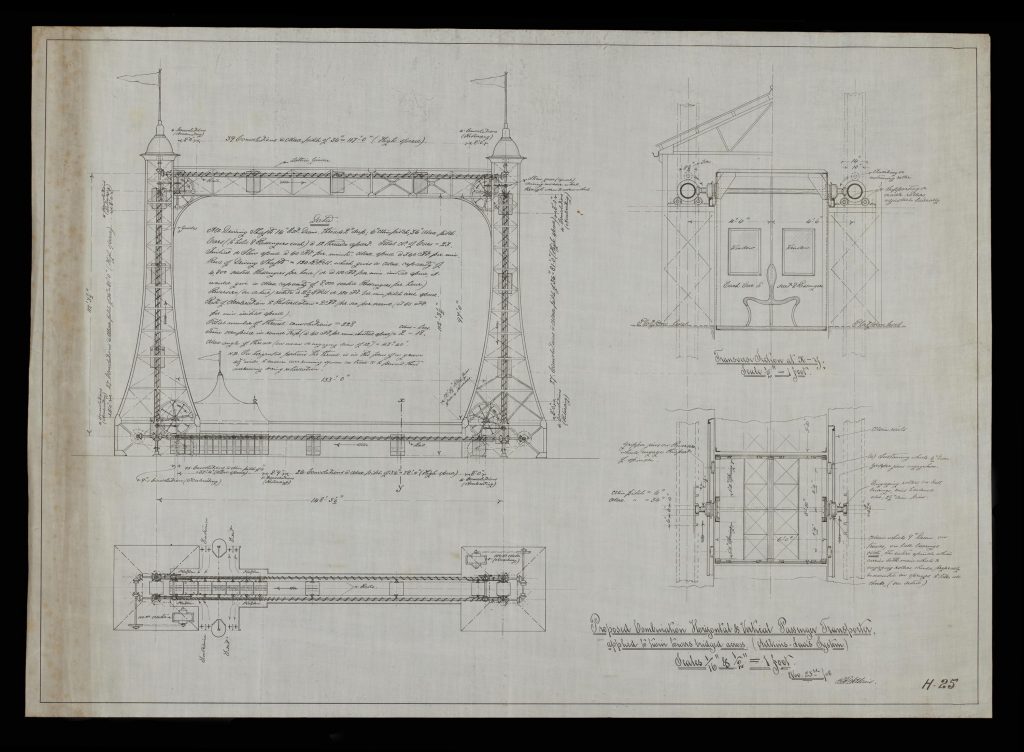

thank you so much for me to come and see the Flying Scotsman
I had never heard of the “never stop railway“. I stumbled upon it while reading about the British Empire exhibition in 1924-25 after it was mentioned on Downton Abbey. The story is quite interesting. I have to wonder if the people at Disney got the idea for the People Mover for their “fair grounds” from the never stop train. As an American, I love to read about the British railway and the trains over the many decades. I have been on a few of your new trains, but look forward to one day riding a vintage train described in so many books and seen on so many movies and TV shows. Thank you for your website.
My father, Harry Lee, ran this railway for the duration of its time at the Wembley Exhibition in 1924/25. I am so pleased to read about it now because I didn’t ask enough questions while he was alive. He died in 1983.
Margaret
Dou you still have any photos etc of the Never Stop Railway which your father may have taken? I am proposing to make a model of it.
Dave
David,
I have only just read your message to me about the Never Stop Railway – so sorry.
I believe that we did once have one or two photos of this, but my eldest sister probably had them. Unfortunately she died two years ago. Her daughter probably took all of the family photos when she was going through her things. I will make enquiried of my niece.
So interested to hear that you are planning to make a model of the railway.
Margaret
There is a season train ticket for the British empire exhibition never stop railway dated 1925 on ebay, is this authentic?
We have just discovered some pictures of The Never Stop railway amongst artifacts my sister has just inherited. Would they be if any interest to you or anyone who may read this?
I am a Grandson of William Lewis. My brother and I have seen the Science Museum’s store of the memorabilia of Grandfather. The curator told us at the time that he thought that there may be a book in this. I wonder if Zoe Guilford has had any luck with this.
My research into English Oilfields Ltd. in West Winch and Setchey in Norfolk produced a newspaper cutting dated 6th Jan 1928 looking for what happened to the money from ‘This sorrowful concern’
5 years before the above date there was £129,000 in the bank, by 1928 there was only £81 ! Of the 129 thousand, £10,000 had gone in the Neverstop Railway.